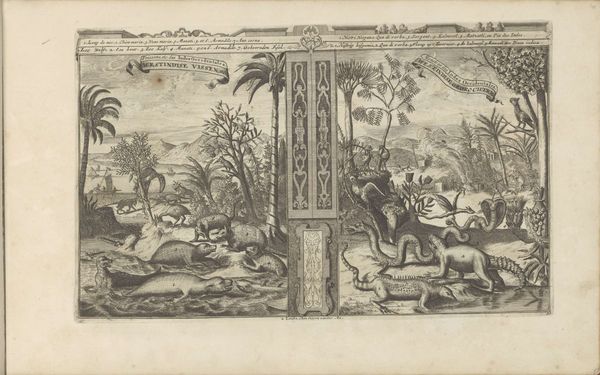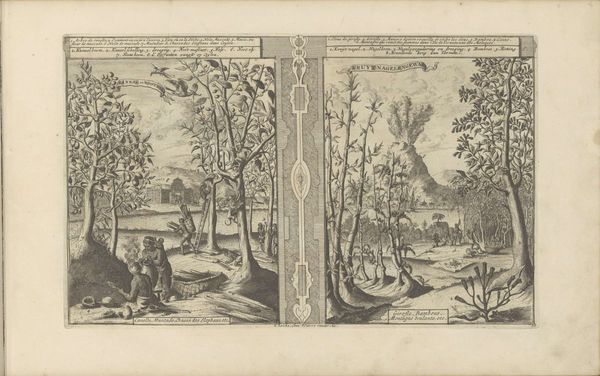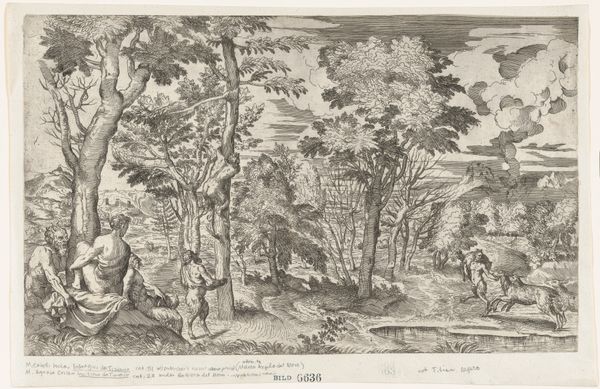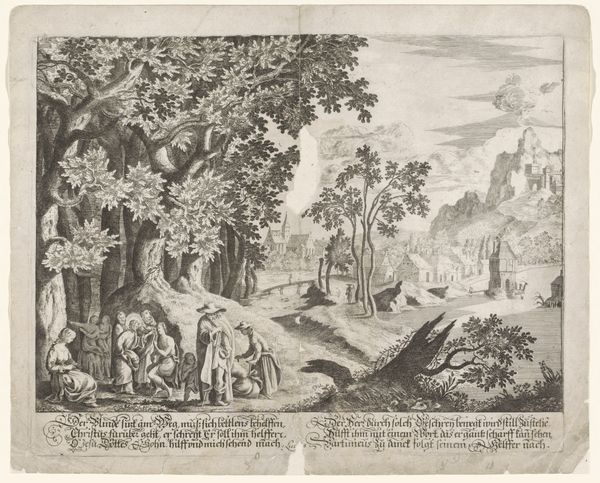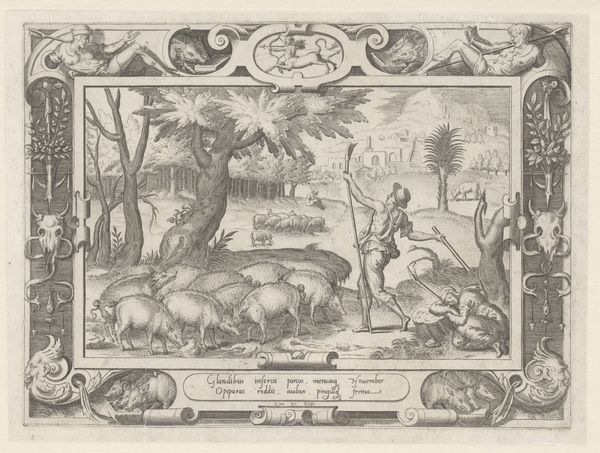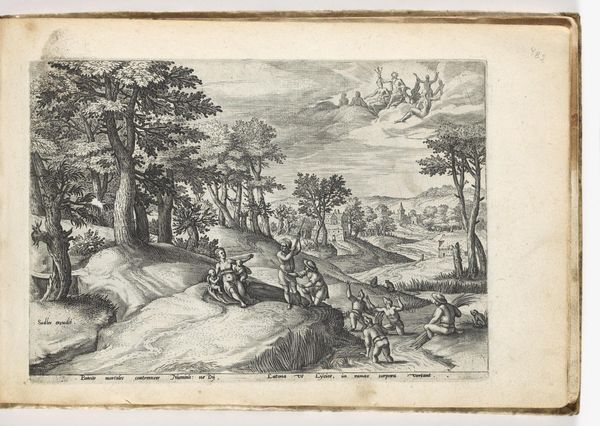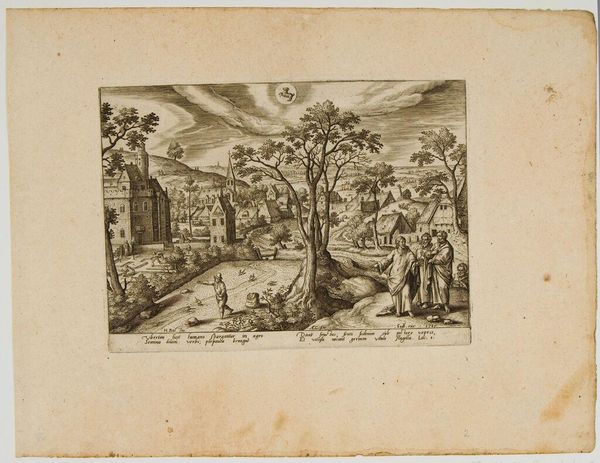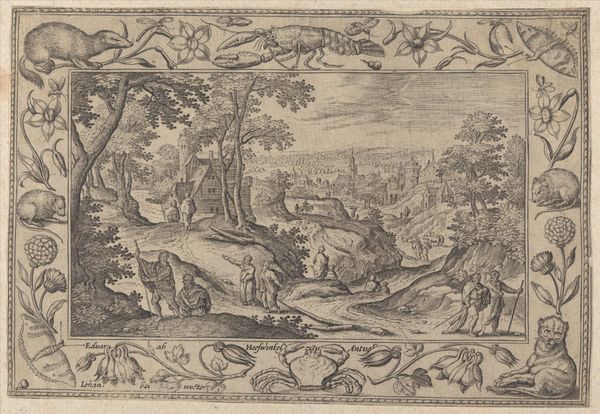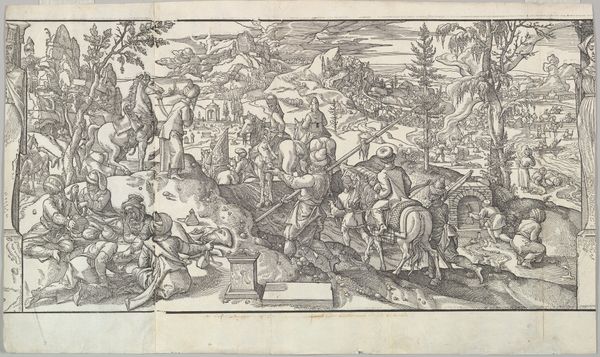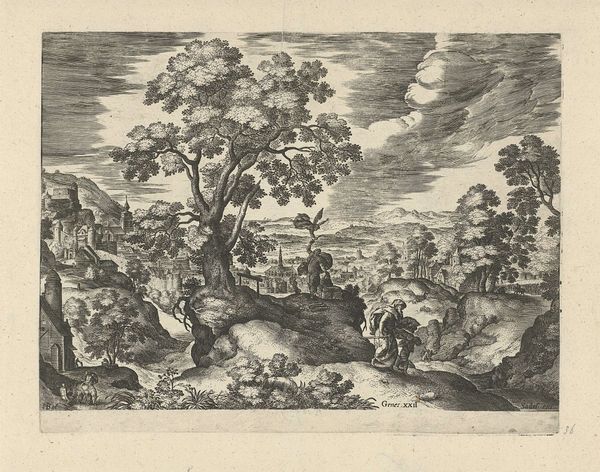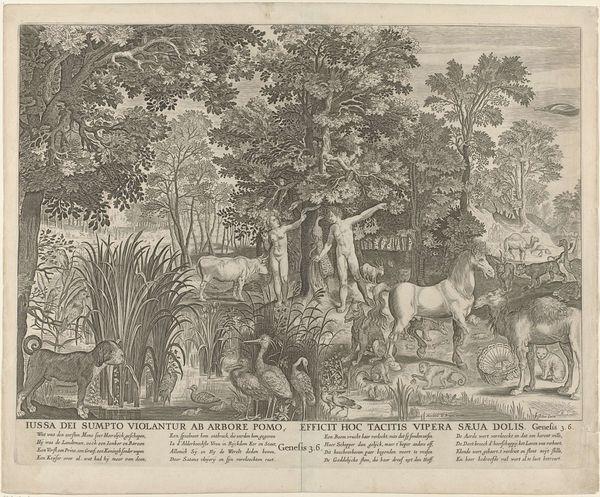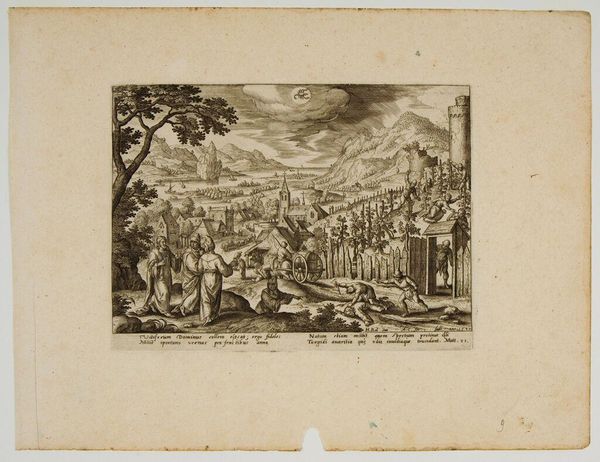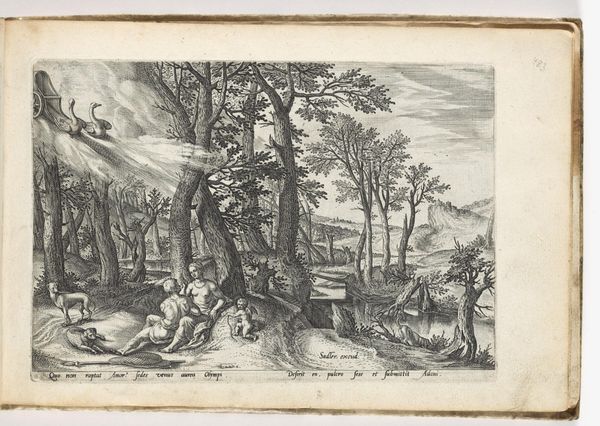
print, engraving
#
animal
#
dutch-golden-age
# print
#
pen sketch
#
landscape
#
engraving
Dimensions: height 212 mm, width 343 mm
Copyright: Rijks Museum: Open Domain
Curator: This is a print called "Animals from the West Indies" by Romeyn de Hooghe, dating from around 1682 to 1733. It's an engraving, now held here at the Rijksmuseum. Editor: Wow, okay, my first impression is...busy. Almost overwhelmingly so! Like a fever dream of colonial naturalism. Curator: Precisely. De Hooghe never actually traveled to the West Indies. This engraving is entirely constructed from secondhand accounts and popular perceptions of the region. Think of it as a visual compendium of received wisdom, rife with inaccuracies and biases. Editor: So, like, performative exoticism then? Look at all those improbable creature combinations! A flamingo conversing with an armadillo while a tapir waltzes by. It’s like a Hieronymus Bosch jungle party! I guess it also mirrors a Western desire for rationalizing an entire ecosystem that seems alien. Curator: It’s interesting that you bring up "rationalizing." It reveals so much about the socio-political framework of the period. European expansion hinged on the classification and control of the natural world. This print, with its attempts at cataloging, reflects that impulse but inevitably exposes the limitations and distortions inherent in that process. Editor: Well, what this categorization implies, also, is commodification, am I wrong? I can't help but see these depictions as deeply intertwined with the history of colonial exploitation, the brutal extraction of resources, and the dehumanization of Indigenous populations. Look at the detailed engraving work on the different animals, I bet a European citizen has never seen anything remotely close to them, almost fantastical representations of new merchandise ready to be extracted from the land! Curator: You are spot on. The meticulous detail afforded to the flora and fauna overshadows any acknowledgement of the human cost of colonization, which indeed renders this piece as quite problematic. The lush landscape acts as a stage for a drama of domination, subtly reinforcing a Eurocentric worldview. Editor: It also says a lot about humanity, doesn’t it? Centuries later, here we are, decoding its messy, morally ambiguous legacy! Thanks for revealing such complex and important themes in the picture. Curator: The pleasure was all mine, especially knowing we are one step closer to decolonizing these historic perspectives!
Comments
No comments
Be the first to comment and join the conversation on the ultimate creative platform.
